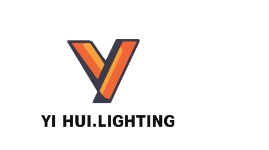What lighting sources are available for indoor lighting?
Release time:2024-12-17
Lighting fixtures for indoor living and working environments are collectively called indoor luminaires. These fixtures serve both decorative and illuminating functions, utilizing various shapes and wattages of incandescent (including halogen) or fluorescent lamps. Indoor luminaires can be classified into six categories: recessed luminaires, ceiling-mounted luminaires, pendant luminaires, wall-mounted luminaires, detachable luminaires, and track lighting.
Recessed into the ceiling, only emitting downward light from general lighting equipment. Diffusing shades, prismatic shades, or louvers are equipped on the light exit surface to reduce glare and broaden the light rays of various optical components. OA lighting, used in office automation lighting, is a type of recessed luminaire that strictly controls the luminance in the direction close to the horizontal angle. It renders fluorescent images on computer screens exceptionally bright, thus minimizing interference with the displayed content. The vast majority of recessed lighting equipment features symmetrical light distribution; only a small number of lighting devices, installed on adjacent ceilings, emit asymmetrical light distribution.
Indoor ceiling-mounted luminaires are installed on the ceiling surface, exposing lighting fixtures of various shapes. According to the emission of light, they can be classified into three types: fully diffused, downward diffused, and downward projected.
(1) Fully Diffused Type. It utilizes diffusing or surface-pressed prismatic transparent material lampshades to illuminate the surrounding space with light. The light source within the lampshade is invisible during operation, with upward light illuminating the walls and ceiling. Therefore, using light-colored ceilings in the room can reflect as much ceiling light as possible.
(2) Downward Diffused Type. A general lighting equipment where the sides of the lampshade are made of opaque or semi-opaque materials, and light transmits through the semi-transparent lampshade from below. Only a small amount of light illuminates the ceiling.
(3) Downward Projected Type. Fixtures with a small beam angle, used for accent or supplementary lighting. Installed on the ceiling, providing sufficient light for visual tasks.
Previous

